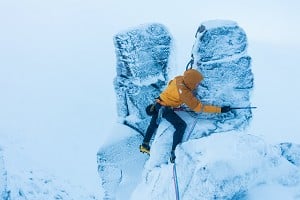
This is a thoroughbred mountaineering shell, just one made out of a very lightweight fabric: Gore-Tex Paclite. Being so light does of course come with durability compromises, and it is not the most breathable Gore product, but if saving weight is critical then lightness is going to be a major factor in its favour. Beyond the obvious advantage of PACLITE (Gore capitalise their product names, but this comes over as 'shouty' in print so let's ditch the convention here) being very light, it has another, significant upside - affordability. Currently the Latok Paclite Plus retails at £250, about half or even less of the cost of the other jackets in the Latok mountaineering range. While these other options are for rather different niches, this bottom line is going to be a major consideration for many potential customers.
Weight - not much!
The Latok Paclite is a rather simple jacket, but in a good way. Its stripped-down design, allied to the lightweight nature of Paclite, means that my medium-sized jacket weighs just 258g on my scales. Rab says the medium weighs 257g, I'm sure if I washed the accumulated salt from sweat and dirt away, it would lose that extra gram. Or perhaps our scales are measuring a quarter of one percent differently!
This is impressively light, particularly for a jacket with a great helmet-compatible hood. By comparison, the Berghaus Mtn Guide Hyper Alpha Jacket I reviewed early this year is about five grams heavier, it is partly lined with Polartec Alpha making it warmer but its hood cannot go over a helmet and things like its cuff adjustment are less refined. The only other lightweight shell I've used in recent years with a hood that rivals the Latok Paclite's is the Jöttnar Hymir, but that shell is a smock - a design that not everyone likes - still weighs about 50g more than the Latok, and is not currently available. I wouldn't claim the Latok Paclite is the best sub-300g shell for mountaineering in the world, but it's the best I've used.
Fit
One significant disadvantage of this jacket, sadly, is that it's only made in a men's fit. What makes the Latok Paclite excellent for mountaineers and climbers is the helmet-compatible hood. Rab do make Paclite shells in women's fit, but I don't believe either the Kangri or Namche Paclite models have helmet-compatible hoods. This is a real shame as the hood on the Latok Paclite is excellent and turns it from being just another decent lightweight hardshell into a proper climber's jacket - but currently not one that will fit most women climbers well. Hopefully, Rab might rectify this in coming seasons.
With everybody being a slightly different shape, fit is inevitably very personal. I'm 175cm tall (a bit under 5' 10") with a relatively broad chest and shoulders. The size Medium fits me excellently - no resistance around the chest and shoulders, but also not flappy. The hem sits below my bum, meaning plenty of overlap with waterproof trousers for those really gopping days. The arms are well articulated, and I have climbed in the Latok with no issues - your harness will keep the hem down anyway, but reaching high above your head does not drag the jacket up. The sleeves are plenty long enough for me, so would probably fit someone quite a lot taller.
Features - all that you need and none that you don't
In terms of features, it is a short list - which in this context is a good thing.
As already noted, the hood is excellent - I've tried it over three different models of helmet just to check and it goes over all with ease. You can close the zip fully, offering protection over the mouth and nose, and still easily look up - as you would when belaying - with no resistance or pulling. Yet equally I've worn it without a helmet, whether bare-headed or over a woolly hat or a baseball cap, and the volume adjusters make it work well in all situations. The hood's stiffened brim keeps heavy rain off your face - particularly useful if you are a glasses wearer.
All the zips on the jacket are the water resistant type, with the main zip having a storm flap behind it. Besides the main zip, the jacket has two relatively short but still effective pit-zips. In connection with cooling down, the sleeve cuffs have velcro adjusters on them, meaning they can both go over decent sized gloves in the cold but can be pushed up to the elbows if you get hot. The hem of the jacket has elastic and adjusters on both sides to cinch it in, for poor weather.
The last zip is on the chest pocket - the only pocket on the jacket. This one pocket is a decent size; Rab being jolly British seemed to have sized it to take a folded OS map, at least one with its cardboard cover removed. In recent years I've normally used Harvey maps in the Lakes and Eryri, and these easily slip into the chest pocket. It also easily takes a modern mobile phone - but if you do keep your phone there (as I often do particularly if I am also navigating using the OS app) - don't expect Rab to take responsibility for it! Something I had not seen before was that the jacket came with a card in the pocket informing the owner that the pocket could still get condensation inside it (Gore-Tex being breathable, this shouldn't really come as a surprise to anyone!). The card states clearly that they will not provide compensation for electronic devices that suffer water damage in the pocket, and they suggest putting your phone in a plastic bag. I can't say it would have crossed my mind to try and get the company that made my coat to replace my phone if I got it soaked, but clearly enough people have tried to make it worthwhile for Rab to include a card like this!
Fabric - it works and doesn't cost an arm and a leg, what more can we ask?
Back in the Noughties I was among many who were a bit sceptical about Paclite - "sweaty" and "crisp packet" are terms that sprung to mind after coughing up for one. But this is the second Gore-Tex Paclite jacket I've tried in the 20s, and I'm still pretty impressed with the modern version of the fabric, mainly because you get a jacket that breathes OK but at half the price of Gore-Tex Pro. Officially it doesn't breathe as well as some other Gore products, but for its intended use - that's walking and climbing, remember, not running - I've found it hard to feel much difference in real word conditions. Interestingly, Rab give RET figures alongside hydrostatic head figures for their jackets, something that Gore-Tex hasn't traditionally done.
For Paclite they are "HH: 28,000mm/RET:
Out of the lab, if I work hard in the Latok Paclite then I will get sweaty in it. This is particularly true as its design makes it well suited to summer use, even if that is summer in the mountains. But I get sweaty in Gore-Tex Pro jackets as well, and at more moderate levels of exertion the Paclite works well, particularly when you use the pit zips, push the sleeves up or open the main zip. Don't expect miracles, no jacket is going to stop you sweating when physically active, but the hydrostatic head figure, equal to that of Gore-Tex Pro, shows that when it's chucking it down, the Latok Paclite should keep you as dry as anything can.
The fabric used in the jacket is a comparatively thin 13D, and is only 2.5-layer. Compare this with the 3-layer 80D of the Goretex Pro in the Latok Extreme, and it's clear that the Latok Paclite cannot be expected to take anything like the same abuse. Don't buy this jacket if the first thing you are likely to do with it is udge up an early-season Savage Slit. It simply isn't made for that.
But I have used my Latok Paclite in an afternoon alpine thunderstorm as we abseiled hurriedly back down the many pitches of Via Malvassora on the impressively rocky pyramid of Becco Meridionale della Tribolazione. It has also kept me dry backpacking in a soggy Peak District and warm in the first flurries of snow on the highest tops of the Lakes. I've also stuffed it, 'just in case', numerous times into already over-stuffed packs for days out rock climbing, so it has bushwhacked its way down from cliffs from the valley sides of Orco to some of Derbyshire's least salubrious quarries! So far it has survived all of these experiences and still looks new.
Sustainability
Rab have been making strides in transparency with their Material Facts product info. The Latok Paclite can't make any real claims to being particularly environmentally sensitive; it's made in China, has only 1% recycled content and all of its component groups (fabric, zips, trims) include fluorocarbons - but at least Rab are being honest about it. Obviously elsewhere the company is taking steps to operate more sustainably, it just seems that this is harder to do with some performance models. But at least we know.
Overall
Beyond it not coming in a female cut and not being exceptionally breathable, there's not much to dislike about the Latok Paclite Plus jacket. It might be depressing to say, but 250 quid really isn't that much today for a brand-name waterproof jacket made from the leading brand of waterproof fabric, so it is very good value for money. Yes, Paclite is light, so it won't be very tough. But as my use has shown it definitely isn't tissue paper either. Obviously the Latok Paclite is a mountaineer's jacket designed to be light and carried as much, if not more, than it is to be worn. But when you do put it on, and particularly when you pull that hood up over your head, you know that this is a shell that is going to do its job. From lightweight fair weather winter missions to summer scrambling and mountain rock, it's got you covered.

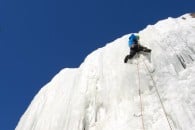


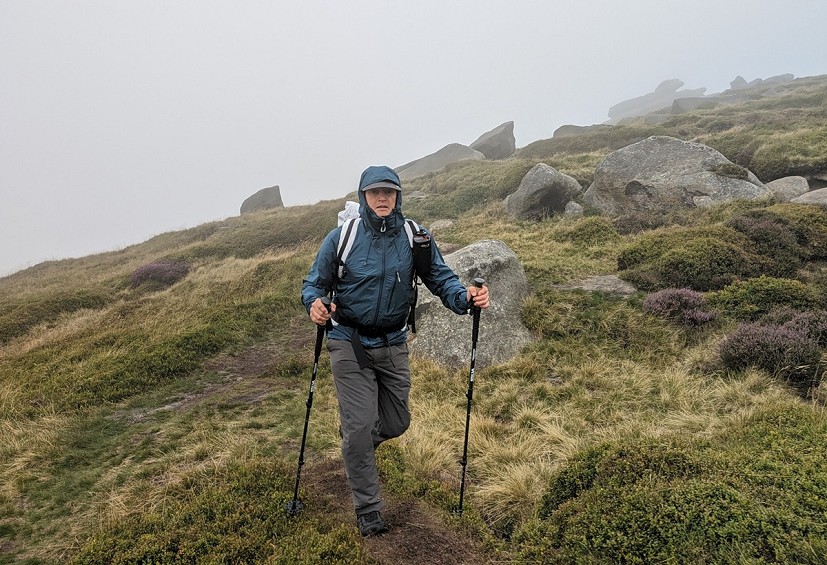
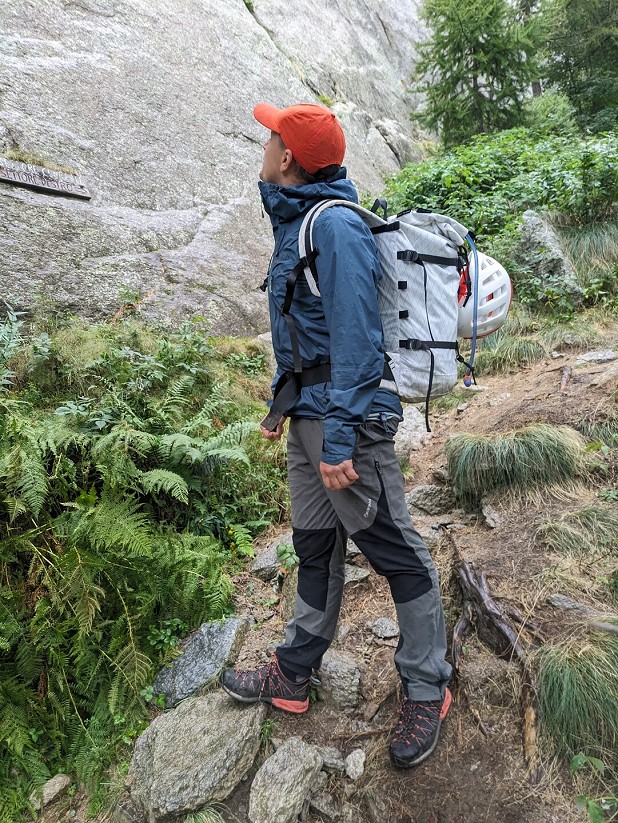
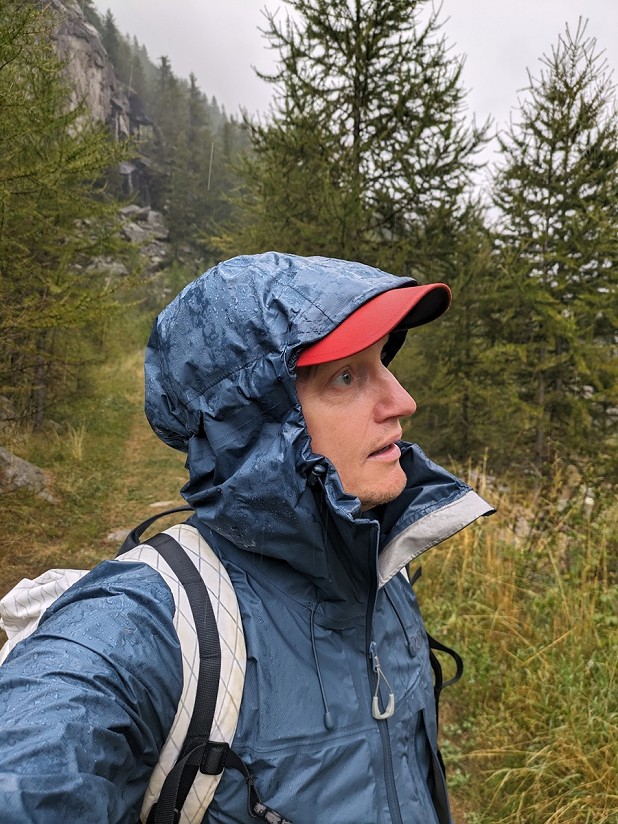
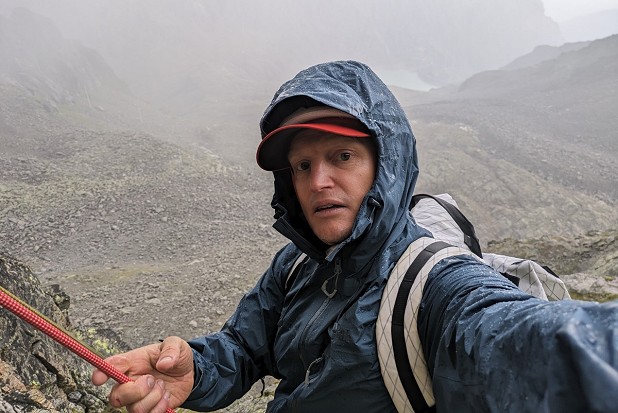
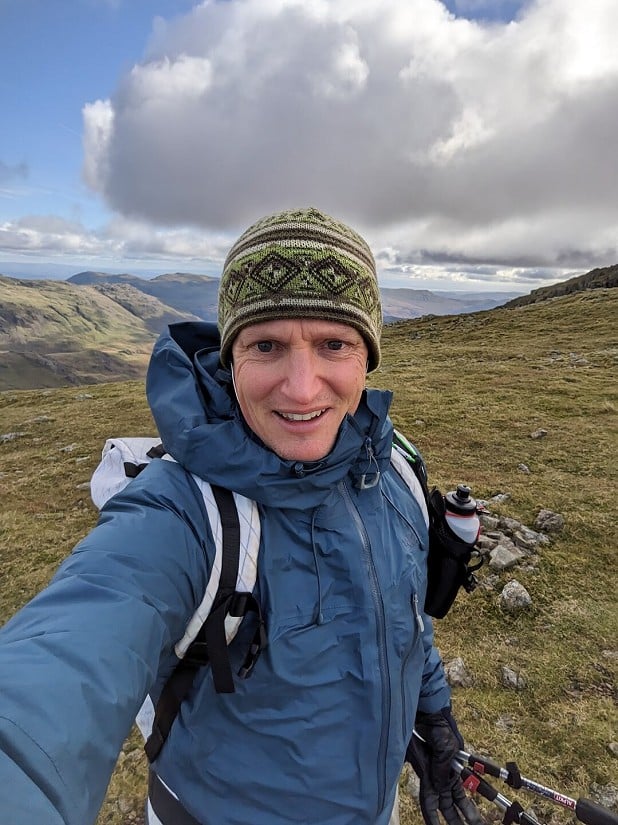
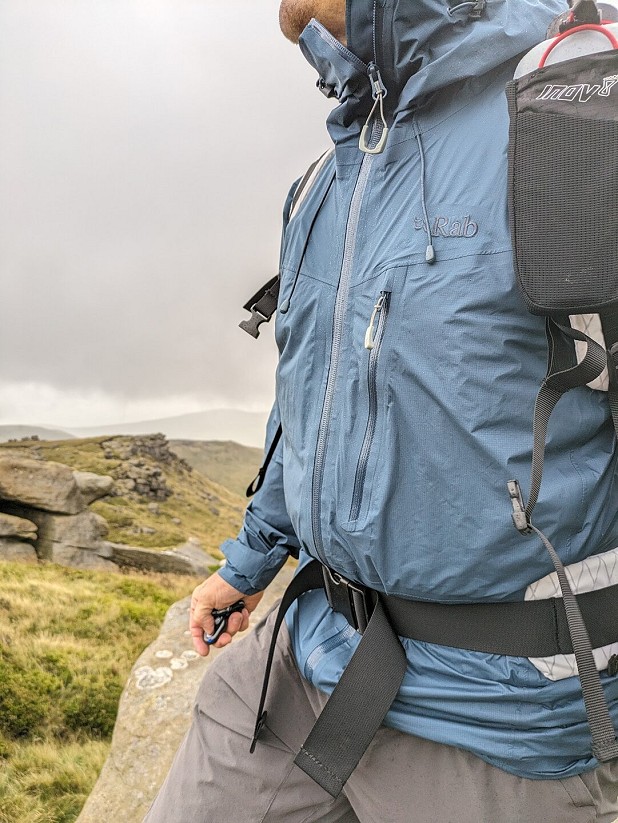
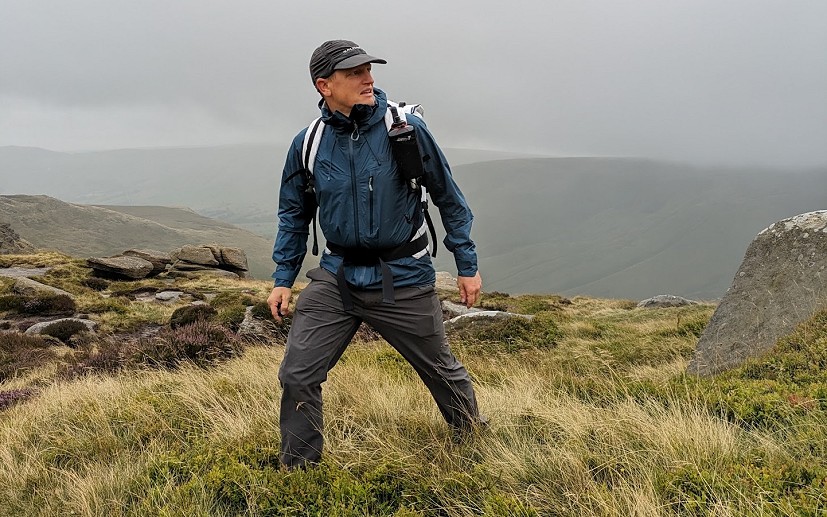
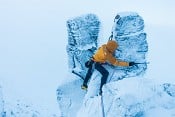


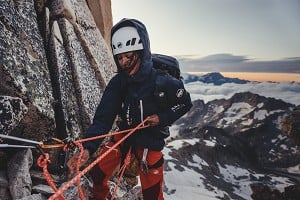
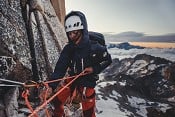


Comments
I think would be good for fell running, protective enough when needed but light/compact enough to carry, as it would be carried most of the time.
Quite possibly, although I'm sure a bit sweaty. Unfortunately, mainly due to me being awful at- and absolutely loathing- going running, I never tested it for that!
I tend to never really run in a waterproof for those reasons, typically if I'm running in the hills (or anywhere that is even vaguely away from being able to quickly get shelter/help) I'll carry one in a running vest in case of emergencies or putting on for the last ten mins or so as part of my cool down. So I'd prefer to have a shell that also useful for walking, scrambling etc. If it's a day where a waterproof is needed to run in for extended periods from the outset I'll be at home (or in the pub!)
I've been using mine as a waterproof for bike commuting. I've been very impressed with the breathability of the jacket and some old paclite Berghaus trousers too after 30+mins of pedalling in proper minging rain.
It's a great just in case jacket too!